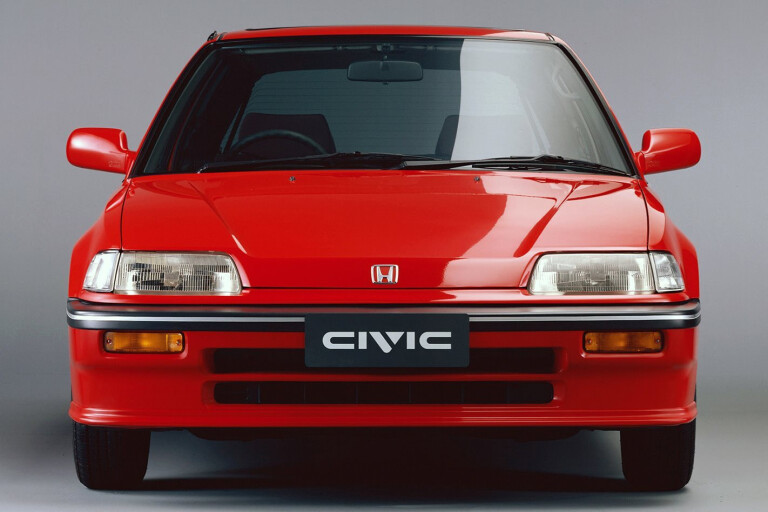
In this latest of our Fast Facts series, we focus on Honda, the company that has pioneered the fields of bikes, cars and engines since being formed in the aftermath of World War II.
The Japanese brand spent two decades establishing itself as the king of two wheels before developing into one of the car industry’s most innovative companies.
FROM TOYOTA TO TWO WHEELS
Toyota supplier and repair mechanic Soichiro Honda had automotive ambitions of his own. After toying with various, unfulfilling product ideas, Honda was inspired to build a motorised bicycle.
While not an original idea at the time, he intended to make such a vehicle affordable to the masses. The Honda Technical Research Institute was started in Japan in 1946, becoming the Honda Motor Company two years later.
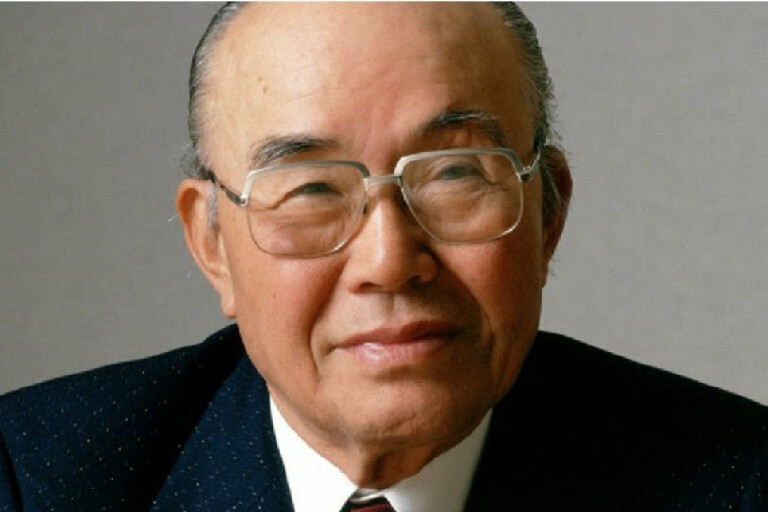
WORLD’S MOST POPULAR MOTORBIKES
By the 1960s, Honda had established itself as the world’s largest motorcycle manufacturer.
While this article is focusing more on Honda’s four-wheeled history, legendary bikes would go on to include the 1969 CB750 Four four-cylinder performance bike; the versatile CT110 known in Australia as the ‘postie bike’ and produced since 1980; and the Goldwing that redefined long-distance two-wheeled touring.
Australian motorcycle legend Mick Doohan also won all five of his successive titles in the 1990s riding a Honda.
FIRST CAR
Honda displayed it first car in 1962, though the S360 didn’t go into production. That makes its bigger-engined successor, the 1963 S500, the company’s first official car, though the first four-wheeled vehicle came a few months earlier in the form of the T360 mini-truck.
The S500’s engine was influenced by motorcycle design, though is eventually exported with bigger engines – with the S600 that came to Australia in 1964, and the 1965 S800 with a 0.8-litre.
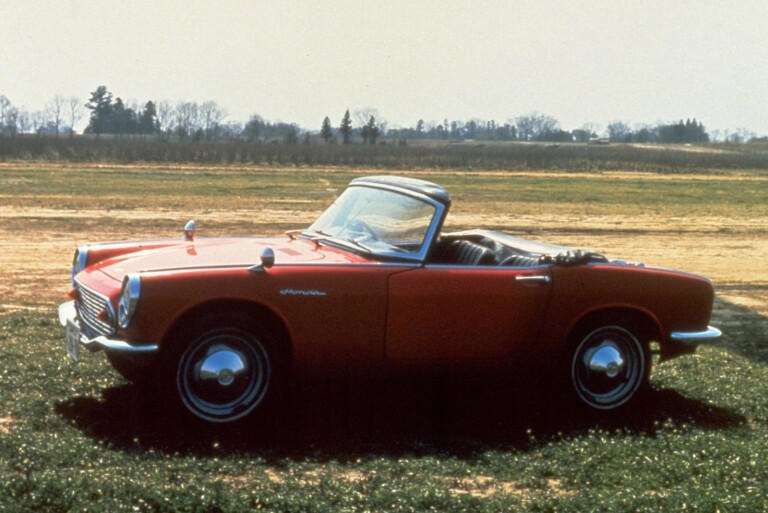
SUPER SUZUKA
Honda built the Suzuka circuit in 1962, which remains famous for its rare figure-of-eight layout. Built within funfair grounds, it staged a non-championship Formula 1 race the following year though didn’t replace the (Toyota-owned) Fuji circuit as the host of the official Japanese Grand Prix until 1987.
Except for a return to Fuji in 2007 and 2008, Suzuka has staged the race since – becoming famous for its rare, figure-of-eight layout and loved by F1 drivers and fans alike.
F1 DOMINANCE
A Honda engine powered the McLaren racing team to what still stands as the most dominant season in Formula 1, when the Anglo-Japanese partnership – with renowned drivers Ayrton Senna and Alain Prost – claimed 15 of the year’s 16 races, and a 94 per cent win ratio.
CIVIC PRIDE
Australia had already seen a cheeky little front-drive model in the N360 ‘Scamp’ before the arrival of the Civic in 1973, but the latter would become the enduring Honda model – the brand’s oldest nameplate and released in 2016 in its 10-generation guise.
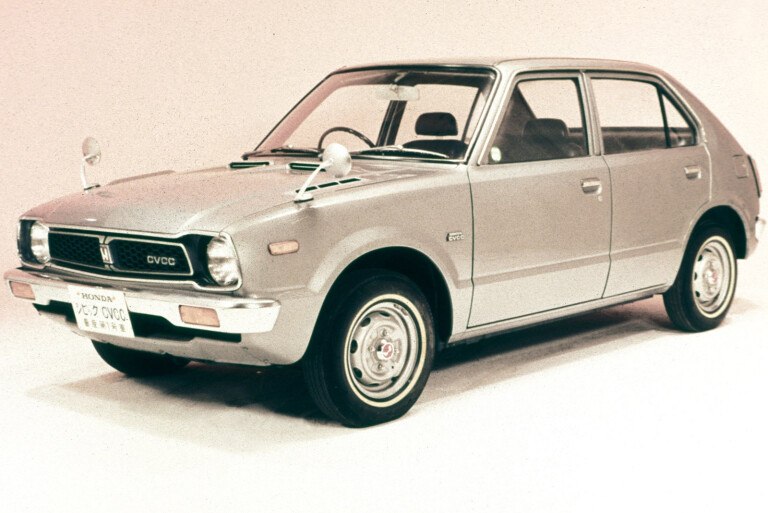
Borrowing a concept from the Mini with its transverse engine and front-wheel-drive layout, the original Civic’s launch coincided perfectly with the oil crisis. Efficiency wasn’t its only quality, either, as it was fun to drive and relatively spacious for its compact dimensions.
HONDA STRIKES A US CHORD WITH ACCORD
The Accord was born in 1976 and two years later it would mark the beginning of Honda’s hugely impressive foray into the crucial North American market.
It threw down the gauntlet to US rivals for quality and fuel efficiency, and from the second-generation model’s arrival in 1981, it would become the most popular Japanese nameplate for 15 years running. Accord also became the first Japanese car to be built in the US.
In 1977, the original Accord won Wheels magazine’s coveted Car of the Year award – the first of six awards for Honda models up to the 2011 CR-Z hybrid sports hatch.
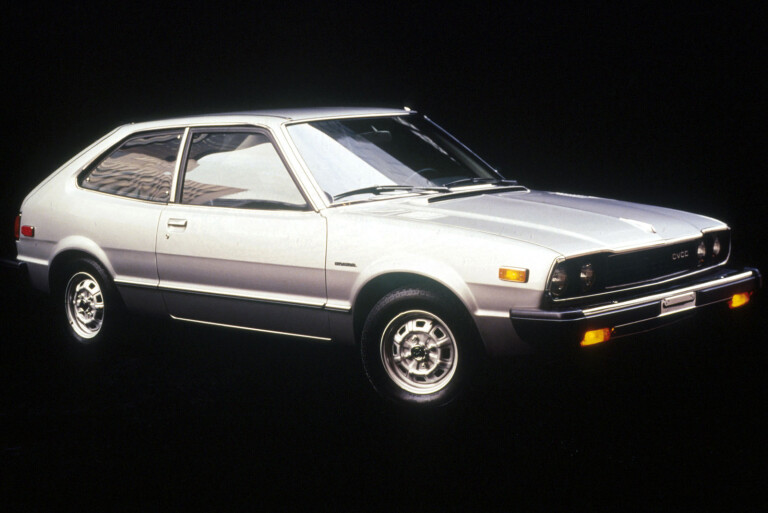
WORLD’S FIRST IN-CAR NAV
In 1981, the Accord became the first commercial car to be offered with the option of a navigation system.
It wasn’t a GPS system like today’s advanced navs – instead, it was a gyroscope-based system that blinked the car’s calculated position on plastic maps that drivers inserted into a dash-top display.
ACURA
Honda’s US success – and improved US-Japan trade regulations – encouraged the company to establish a luxury spin-off marque, called Acura.
The hero car is the Legend, available in both sedan and coupe body styles, and it contributes to Honda’s North America sales outperforming BMW and Mercedes-Benz by 1990. By that point, Toyota and Nissan had already followed suit – with their Lexus and Infiniti brands, respectively.
TAKING ON FERRARI
Arguably at the height of its innovative powers – and stature, after powering F1 cars to six consecutive constructors’ titles between 1986 and 1991 – Honda built its first supercar in 1990.
The NSX was more affordable than peers of the time, such as the Ferrari 348, yet won huge respect for being as user-friendly around town as it was on a racetrack, and its technical feats that included a 3.0-litre V6 that pioneered the use of variable valve control, as well as being the world’s first car with an all-aluminium monocoque construction.
FIRST TO HYBRID
Ask someone the name of the world’s first hybrid car, and the majority would undoubtedly answer: Toyota Prius. Yet the Honda Insight pipped it to market by a year, in 1999.
Fuel consumption of 3.9 litres per 100km was noteworthy, aided by a sleek, aerodynamic shape and a lightweight aluminium structure. However, a $50,000 price tag and a two-seater-only cabin reduced its appeal.
FIRST TO HYDROGEN
The 2008 FCX Clarity was another tick in Honda’s quest to lead in automotive innovation, marking itself as the world’s showroom vehicle to convert hydrogen gas into electricity for powering the car – and producing zero emissions.
Honda committed to a second-generation model in 2016, though the lack of global hydrogen refuelling infrastructure means it remains restricted to a lease arrangement and available only in California, Japan and parts of Europe.
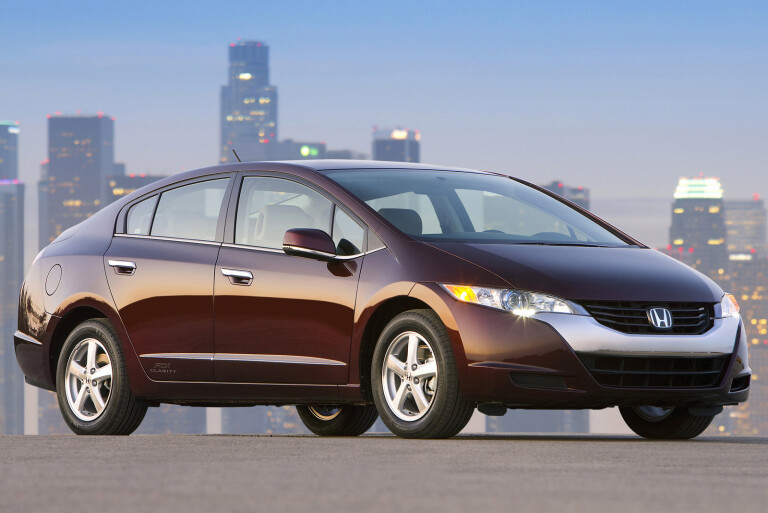
HONDA JET
Diversification is nothing new for a company that produces a vast range of mowers, blowers and boat motors, but a commercial jet is.
The Honda Jet claims plenty of benchmarks for its new light business jet: fastest in class (422 knots maximum cruising speed), highest maximum altitude (30,000m), plus best fuel efficiency (by up to 17 per cent).
Naturally, it’s powered by a Honda engine, developed in conjunction with General Electric.

ENGINE
With all the internal combustion motors it produces across the fields of cars, motorcycles, marine and power equipment, Honda is the world’s largest engine manufacturer.
In 2014, it produced more than 27 million engines.


COMMENTS